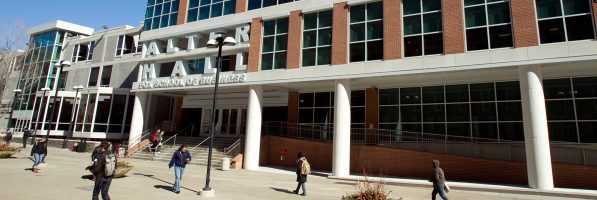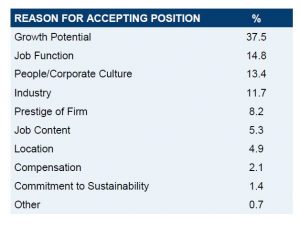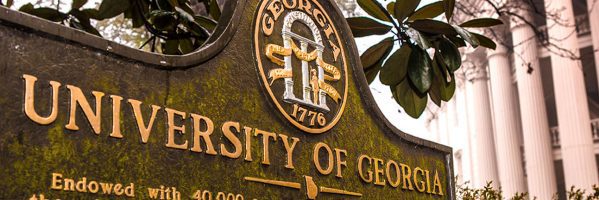MBA Preview Day at Cranfield School of Management

January 14, 2017, kicks off the Cranfield MBA season with the first MBA Preview Day at the Cranfield School of Management. These Preview Days offer MBA candidates an opportunity to spend a whole day immersed in Cranfield’s culture and atmosphere. Attendees take part in a case study, attend a sample lecture, meet current students, learn from program directors, engage with the career development team, and make contact with alumni. It’s a full day experience that gives MBA candidates insight into anything and everything Cranfield.
MBA Preview Day Dates
The January 14th MBA Preview Day is just the first of the year. Seven more Preview Days will be held throughout 2017 starting with one every, other month and ending with one a month starting in September. The event dates are as follows:
- January 14, 2017
- March 4, 2017
- May 20, 2017
- July 22, 2017
- September 9, 2017
- October 14, 2017
- November 11, 2017
- December 2, 2017
Attending the Event
Attending an MBA Preview Day event is easy. The cost is free; all candidates have to do is get to the Cranfield University campus. The campus is located between London, Oxford and Cambridge, in the heart of the UK. Parking on campus is also free, and the distance from the London Luton Airport is only 22 miles.
As for staying overnight, MBA candidates from out of town can book en suite accommodation on the campus for easy walking distance to all lecture rooms and facilities. To make an inquiry about booking, contact the Cranfield Management Development Centre.
Who Should Attend?
Anyone interested in earning an MBA from the Cranfield School of Management is welcome to attend. It’s most recommended for potential MBA candidates who desire an on-campus experience that replicates a day-in-the-life of a Cranfield MBA. The day will provide attendees with a much more in-depth look at the full-time and part-time MBA programs compared to what’s available online or in the brochure.
To register to attend an MBA Preview Day and to learn more, visit the website.
Fox Temple Maintains Top Spot As Country’s Best Online MBA

For the third straight year, the Fox School of Business at Temple University earned top honors as the country’s premiere Online MBA program, according to U.S. News & World Report.
Commerce College Ranked As Top Value MBA

The Texas A&M University – Commerce College of Business recently named a top value among both undergraduate and graduate business degrees.
MIT Sloan 2016 Employment Report Reveals Slipping Salaries

The MIT Sloan School of Management, late last week, released its 2016 Employment Report for MBAs, revealing slightly slipping salaries year over year and slightly lower percentages of graduates heading into consulting and technology than in prior years. The pharmaceutical/healthcare industry drew the third largest percentage of graduates—5.8 percent—knocking investment banking out of the top three for the first time—perhaps ever. Investment banks drew just 4.7 percent of the 2016 class, down from 6.1 percent last year, 6.8 percent in 2014 and 8.1 in 2013.
As it has for several years running, consulting snapped up the most MIT Sloan grads this past year, 30.5 percent, but that represents a second consecutive year of decline, from 33.9 in 2014 and 32.1 in 2015. The technology sector drew almost as many graduates as consulting—29.3 percent of the class. That was down slightly from 2015’s 30.7 percent, but an increase over 2014’s 26.1 percent and significantly up from the 19.2 percent that went into tech in 2013.
McKinsey and Amazon Compete with Founders’ Dreams
In terms of absolute numbers, more MIT Sloan ’16 MBAs headed off to work for McKinsey than any other company—26, or 6.6 percent of the entire class. Amazon was second, luring 23 recent grads. Falling right between these two top hiring firms were the 24 graduates not seeking employment because they were starting their own businesses, down slightly from last year’s 28 founders. Representing 6.1 percent of the graduating class this year (and 7 percent last year), the ranks of entrepreneurial founders at MIT Sloan rival schools like Harvard Business School, where founders made up 6.8 percent of the most recent class. But they still trail Stanford Graduate School of Business, with its whopping 15 percent of 2016 graduates who started their own ventures upon graduation.
The other consulting giants—Bain and Boston Consulting Group—drew the next largest contingents of recent grads, 17 and 14 respectively. Then came tech firms Microsoft and Google, snapping up nine and eight a piece. Bank of America Merrill Lynch was the sole investment bank named among Sloan’s top hirers in 2016, employing five recent grads.
Salaries Hover at or Below Prior Year Levels
As for how much money Sloan grads are bringing home, the median base salary for 2016 grads remained at 2015 levels, $125,000. The mean base salary for graduates heading into what MIT Sloan breaks out as service industries—consulting, software/internet, investment banking/brokerage, retail, private equity/venture capital, investment management, diversified financial services and media/entertainment—was $126,841, down slightly from the prior year’s $127,601. Grads heading into manufacturing industries—including pharmaceutical/healthcare, computers/electronics, consumer products, automotive/aerospace, oil/energy, telecommunications and transportation/equipment/defense—claimed a mean starting salary of $120,696, down from last year’s $123,416.
Fewer students—66.1 percent—reported signing bonuses in 2016 than the 75.3 percent who reported them in 2015. But 2016 saw a rise in the prevalence and amount of other guaranteed comp. This year, 22.1 percent of graduates reported receiving other guaranteed compensation, with a median of $23,401. The year before, only 18.8 percent expected other guaranteed compensation and the median was lower at $20,500.
The highest starting salary of the Class of 2016—$200,000—went to a student entering what MIT Sloan categorizes as “Manufacturing, Other,” explaining in a footnote that other refers to manufacturing, telecommunications, and transportation/equipment/defense. The lowest, $50,000, went to a grad heading into the retail industry.
MIT Sloan breaks out signing bonuses not by industry but by function. The highest signing bonus for this most recent group of grads was $77,000, awarded to a graduate who is now working in product management/development. The median signing bonus varied depending on function, with leadership development/general management/consulting/marketing/operations roles coming in around the $25,000 mark but investment banking and “finance, other” (including corporate finance, finance operations, treasury and M&A) reporting median bonuses of $49,000 and $47,500 respectively. The median other guaranteed compensation, meanwhile, was $19,500, ranging from $100 at the low end to $89,380 at the upper limit.
Tech Tops Consulting for Second Year Running in Drawing Sloan Interns
A look at where MIT Sloan Class of 2017 MBA students chose to intern shows technology holding the greatest sway, with 29 percent of students heading to tech firms for the summer. This is down from 2015, when 33.2 percent headed into tech for their internships, but it still outdistances the consulting industry, which this past summer drew 21.9 percent. Unlike with full-time jobs, investment banking held onto the third spot in terms of attracting interns, drawing 8.1 percent of the class. Pharma/healthcare, which beat out investment banking in terms of full-time positions, attracted 7.4 percent.
Salaries for summer interns at Sloan edged upward slightly depending on the industry. For students interning in service industries, the median monthly pay was $8,000, no change from the summer before. But the mean monthly pay moved up to $8,633, from $7,771. For students interning in manufacturing industries, the median monthly salary stayed constant at $7,200, but the mean monthly salary dipped from $7,102 last year to $6,871 for the most recent crop of interns.
Timing of Job Offers, Reason for Accepting Jobs
In terms of the timing of job offers, 88.7 percent of MIT Sloan 2016 grads had job offers at the time of graduation, down from 91.5 percent the year before. But by three months out from graduation, 95.3 percent had offers, pretty much on par with the prior year’s 95.6 percent.

Source: MIT Sloan 2016 MBA Employment Report
A little dip in salaries may be no big deal for MIT Sloan grads, according to an additional set of metrics shared in the school’s employment reports. Unlike many peer schools, MIT Sloan includes statistics on why graduates accepted the jobs they did. Far and away the most important factor contributing to what job Sloanies accepted was potential for growth, cited by 37.5 percent of graduates. Job function was the reason reported by 14.8 percent, followed by company culture, cited by 13.4 percent, and then industry, named by 11.7 percent. Far fewer Sloanies accepted the jobs they did because of firm prestige (8.2 percent), job content (5.3 percent), location (4.9 percent), compensation (2.1 percent) or commitment to sustainability (1.4 percent).
View the complete MIT Sloan 2016 MBA Employment Report here.
This article was edited and republished with permissions from Clear Admit.
Terry To Offer Dual Engineering and MBA Degree

The University of Georgia – Terry College of Business recently announced a new dual degree program which will give students the opportunity to earn a bachelor’s degree in engineering and MBA in just five years.
Smith MBAs Meet With Warren Buffett in Omaha

Last fall, a handful of MBAs from the Robert H. Smith School of Business were chosen to meet one of the most successful investors in the world — Warren Buffett. The group traveled to Omaha, Nebraska — the headquarters of Buffett’s investment company, Berkshire Hathaway. On Nov. 18, 2016, the lucky group was able to take part in an informal Q&A session with Buffett himself. Continue reading…
